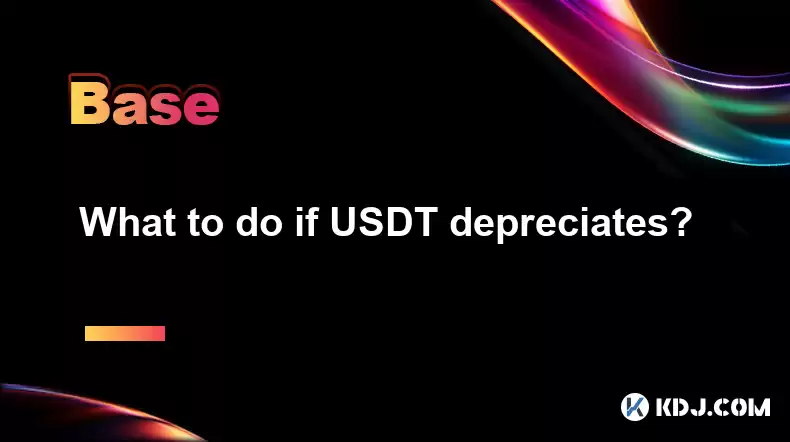-
 Bitcoin
Bitcoin $114500
-0.31% -
 Ethereum
Ethereum $3648
1.11% -
 XRP
XRP $3.033
-0.27% -
 Tether USDt
Tether USDt $0.9999
-0.01% -
 BNB
BNB $758.5
-0.32% -
 Solana
Solana $167.5
1.48% -
 USDC
USDC $0.9998
-0.02% -
 TRON
TRON $0.3331
0.74% -
 Dogecoin
Dogecoin $0.2039
0.25% -
 Cardano
Cardano $0.7419
-0.46% -
 Hyperliquid
Hyperliquid $39.21
2.66% -
 Stellar
Stellar $0.4049
-1.95% -
 Sui
Sui $3.483
-0.56% -
 Bitcoin Cash
Bitcoin Cash $570.8
2.89% -
 Chainlink
Chainlink $16.67
-0.57% -
 Hedera
Hedera $0.2470
-1.57% -
 Ethena USDe
Ethena USDe $1.001
0.00% -
 Avalanche
Avalanche $22.36
1.52% -
 Litecoin
Litecoin $123.4
4.35% -
 UNUS SED LEO
UNUS SED LEO $8.989
0.09% -
 Toncoin
Toncoin $3.324
-2.40% -
 Shiba Inu
Shiba Inu $0.00001219
-1.30% -
 Uniswap
Uniswap $9.811
2.54% -
 Polkadot
Polkadot $3.662
-0.07% -
 Monero
Monero $295.5
-3.85% -
 Dai
Dai $1.000
0.01% -
 Bitget Token
Bitget Token $4.345
0.24% -
 Cronos
Cronos $0.1380
0.95% -
 Pepe
Pepe $0.00001044
-1.14% -
 Ethena
Ethena $0.5981
-4.24%
What to do if USDT depreciates?
To minimize potential losses from USDT depreciations, consider using USDT for short-term transactions, exploring alternative stablecoins, diversifying your cryptocurrency holdings, monitoring market conditions, and seeking professional advice.
Jan 23, 2025 at 06:12 pm

Key Points:
- Understanding the Factors Influencing USDT Depreciations
- Mitigating the Risks of USDT Depreciations
- Exploring Alternative Stablecoins
- Diversifying Cryptocurrency Holdings
- Monitoring Cryptocurrency Market Conditions
- Seeking Professional Advice
Understanding the Factors Influencing USDT Depreciations
USDT (Tether) is a stablecoin pegged to the US dollar, typically maintaining a value of $1. However, like any asset, USDT is subject to market forces that can cause its value to fluctuate. Key factors that can contribute to USDT depreciations include:
- Stablecoin Issuance: Over-issuance of USDT, surpassing the documented collateral reserves, can dilute its value and diminish confidence in the peg.
- Market Confidence: Negative market sentiment, such as concerns about Tether's reserves or liquidity, can trigger sell-offs and drive USDT's price below the peg.
- Macroeconomic Conditions: Volatility in global markets, particularly events that weaken the US dollar, can spill over and impact USDT's value.
- Regulatory Crackdowns: Increased regulatory scrutiny or enforcement actions against Tether can erode trust and lead to depreciation.
Mitigating the Risks of USDT Depreciations
To minimize the risks associated with potential USDT depreciations, consider the following steps:
- Use USDT for Short-Term Transactions: Limit the use of USDT to immediate purchases, transfers, or short-term trades. Avoid holding large amounts of USDT for extended periods.
- Consider Other Stablecoins: Explore alternative stablecoins such as DAI, USDC, or BUSD that have their own established collateralization mechanisms and track records.
- Diversify Cryptocurrency Holdings: Spread your cryptocurrency investments across various assets, including non-stablecoins, to reduce exposure to USDT.
- Monitor Cryptocurrency Market Conditions: Stay informed about cryptocurrency market news, trends, and regulatory developments that may impact USDT's value.
Exploring Alternative Stablecoins
If you are concerned about USDT's potential depreciations, several alternative stablecoins offer similar functionalities and may be worth considering:
- USD Coin (USDC): Backed by Coinbase and Circle, USDC is pegged to the US dollar and maintains robust transparency and auditing standards.
- Binance USD (BUSD): Issued by Binance, BUSD is another stablecoin tied to the US dollar, providing a convenient option for users of Binance's ecosystem.
- Dai (DAI): Unlike USDT and USDC, DAI is a decentralized stablecoin that is backed by a pool of cryptocurrencies, making it less susceptible to centralized issuances.
Diversifying Cryptocurrency Holdings
To mitigate the impact of potential USDT depreciations on your overall cryptocurrency portfolio, consider diversifying your holdings:
- Allocate to Cryptocurrencies: Invest in decentralized cryptocurrencies with strong fundamentals, such as Bitcoin, Ethereum, or altcoins with specific use cases.
- Explore Other Investment Vehicles: Consider alternative investment vehicles within the cryptocurrency space, such as cryptocurrency indices or structured products.
- Seek Professional Advice: Consult a financial advisor specializing in cryptocurrency to tailor a diversified investment strategy based on your risk tolerance and financial goals.
Monitoring Cryptocurrency Market Conditions
Keep abreast of cryptocurrency market conditions to make informed decisions regarding USDT and other stablecoins:
- Follow Cryptocurrency News Sources: Subscribe to reputable news outlets and industry publications to stay updated on market trends and developments.
- Join Cryptocurrency Communities: Engage with cryptocurrency forums, Telegram groups, and social media channels to gather insights and perspectives from other investors.
- Utilize Market Analysis Tools: Use technical analysis and market sentiment indicators to assess market conditions and make informed trading decisions.
Seeking Professional Advice
If you are concerned about the potential risks and implications of USDT depreciations, do not hesitate to seek professional guidance from a financial advisor or expert in the cryptocurrency space:
- Consult a Financial Advisor: A financial advisor can help you assess your risk tolerance, investment objectives, and develop a tailored investment strategy.
- Seek Expert Opinions: Reach out to reputable cryptocurrency analysts or industry professionals to gather their insights on USDT and the broader stablecoin market.
- Attend Industry Events: Attend cryptocurrency conferences, webinars, and meetups to connect with industry experts, network with other investors, and gain a deeper understanding of market dynamics.
FAQs Related to USDT Depreciations
Q: What happens if USDT loses its peg?
A: If USDT significantly depreciates from its $1 peg, it can trigger panic selling and loss of confidence in the stablecoin. This could have ripple effects across the cryptocurrency ecosystem, impacting other stablecoins and digital assets.
Q: Is it safe to hold USDT long-term?
A: While USDT has maintained a stable $1 value for several years, its long-term stability is not guaranteed. Factors such as regulatory changes, economic conditions, or market sentiment can impact its value. It is recommended to limit the use of USDT to short-term transactions or as a temporary buffer.
Q: What alternatives are there to USDT?
A: Alternative stablecoins include USDC, BUSD, and DAI, which offer similar functionality and are backed by different collateralization mechanisms. Consider exploring these options as part of a diversified cryptocurrency portfolio.
Disclaimer:info@kdj.com
The information provided is not trading advice. kdj.com does not assume any responsibility for any investments made based on the information provided in this article. Cryptocurrencies are highly volatile and it is highly recommended that you invest with caution after thorough research!
If you believe that the content used on this website infringes your copyright, please contact us immediately (info@kdj.com) and we will delete it promptly.
- Altcoin Alert: Is Punisher Coin the Presale to Pounce On?
- 2025-08-06 06:50:11
- XRP Price, Bitwise, and the 2030 Forecast: Will XRP Hit the Big Time?
- 2025-08-06 06:50:11
- Ruvi AI: The AI Token Primed for CMC Listing and Explosive Growth
- 2025-08-06 06:30:13
- Michigan Pension, Bitcoin ETF, and Institutional Investment: A New Era?
- 2025-08-06 07:10:11
- Verb Technology's Bold Move: Acquisition, Rebranding, and a $558M Bet on Toncoin
- 2025-08-06 07:30:12
- Sushi's Sizzling Summer: AMA on August 6th & Market Moves!
- 2025-08-06 06:30:13
Related knowledge

What is the difference between CeFi and DeFi?
Jul 22,2025 at 12:28am
Understanding CeFi and DeFiIn the world of cryptocurrency, CeFi (Centralized Finance) and DeFi (Decentralized Finance) represent two distinct financia...

How to qualify for potential crypto airdrops?
Jul 23,2025 at 06:49am
Understanding What Crypto Airdrops AreCrypto airdrops refer to the distribution of free tokens or coins to a large number of wallet addresses, often u...

What is a crypto "airdrop farmer"?
Jul 24,2025 at 10:22pm
Understanding the Role of a Crypto 'Airdrop Farmer'A crypto 'airdrop farmer' refers to an individual who actively participates in cryptocurrency airdr...

What is the difference between a sidechain and a Layer 2?
Jul 20,2025 at 11:35pm
Understanding the Concept of SidechainsA sidechain is a separate blockchain that runs parallel to the main blockchain, typically the mainnet of a cryp...

What is the Inter-Blockchain Communication Protocol (IBC)?
Jul 19,2025 at 10:43am
Understanding the Inter-Blockchain Communication Protocol (IBC)The Inter-Blockchain Communication Protocol (IBC) is a cross-chain communication protoc...

How does sharding improve scalability?
Jul 20,2025 at 01:21am
Understanding Sharding in BlockchainSharding is a database partitioning technique that is increasingly being adopted in blockchain technology to enhan...

What is the difference between CeFi and DeFi?
Jul 22,2025 at 12:28am
Understanding CeFi and DeFiIn the world of cryptocurrency, CeFi (Centralized Finance) and DeFi (Decentralized Finance) represent two distinct financia...

How to qualify for potential crypto airdrops?
Jul 23,2025 at 06:49am
Understanding What Crypto Airdrops AreCrypto airdrops refer to the distribution of free tokens or coins to a large number of wallet addresses, often u...

What is a crypto "airdrop farmer"?
Jul 24,2025 at 10:22pm
Understanding the Role of a Crypto 'Airdrop Farmer'A crypto 'airdrop farmer' refers to an individual who actively participates in cryptocurrency airdr...

What is the difference between a sidechain and a Layer 2?
Jul 20,2025 at 11:35pm
Understanding the Concept of SidechainsA sidechain is a separate blockchain that runs parallel to the main blockchain, typically the mainnet of a cryp...

What is the Inter-Blockchain Communication Protocol (IBC)?
Jul 19,2025 at 10:43am
Understanding the Inter-Blockchain Communication Protocol (IBC)The Inter-Blockchain Communication Protocol (IBC) is a cross-chain communication protoc...

How does sharding improve scalability?
Jul 20,2025 at 01:21am
Understanding Sharding in BlockchainSharding is a database partitioning technique that is increasingly being adopted in blockchain technology to enhan...
See all articles

























































































